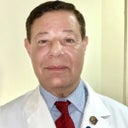What can be done about indentations in the skin directly under the cheekbones that give an aged appearance?
Answers (12)
From board-certified doctors and trusted medical professionals
Dr. Houtan Chaboki, MD

Dr. Houtan Chaboki, MD
Board Certified Facial Plastic Surgeon
Answer
Dr. Nelson Lee Novick, MD

Dr. Nelson Lee Novick, MD
Dermatologic Surgeon, Board Certified in Dermatology
Answer
Dr. Brent Moelleken, MD

Dr. Brent Moelleken, MD
Beverly Hills Plastic Surgeon
Answer
Dr. Otto Joseph Placik, MD

Dr. Otto Joseph Placik, MD
Board Certified Plastic Surgeon
Answer
Dr. William Portuese, MD
Dr. William Portuese, MD
Board Certified Facial Plastic Surgeon
Answer
Dr. Christopher L. Hess, MD
Dr. Christopher L. Hess, MD
Board Certified Plastic Surgeon
Answer
Dr. Hisham Seify, MD, PhD, FACS
Dr. Hisham Seify, MD, PhD, FACS
Board Certified Plastic Surgeon
Answer
Dr. Francis R. Palmer, III, MD (retired)
Dr. Francis R. Palmer, III, MD (retired)
Board Certified Facial Plastic Surgeon
Answer
More Cheek Augmentation Questions
See all Cheek Augmentation Q&AWE SEND PRETTY
EMAILS
What’s trending? Who’s turning heads? Which TikTok myths need busting? We’ve got you. No fluff, no gatekeeping—just real talk. Get our free, unfiltered newsletter.
